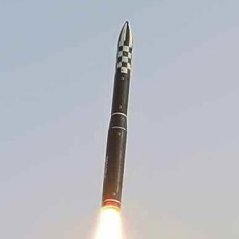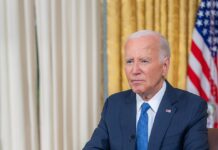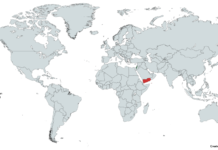This past Thursday (6/13/23) North Korea test-fired two ICBMs (Intercontinental Ballistic Missiles) from a submarine, raising concerns among neighboring countries and the international community. This provocative action comes after North Korea threatened to respond strongly to perceived United States reconnaissance activities near its territory. The missile test, believed to involve a developmental ICBM, showcases North Korea’s continued pursuit of advanced weapon technologies. This act comes at a time of heightened tension, just hours before the commencement of joint military exercises between the United States and South Korea.
North Korea launched the missile, known as the Hwasong-18, which is a road-mobile, solid-fuel weapon, making it more difficult to intercept than the liquid-fuel ICBMs.The missile covered a distance of approximately 1,000 km (620 miles) and reached a maximum alt of 6,000 km (3,730 miles) before landing in between Japan and Korean Peninsula waters. The launch was executed at high angles, possibly as an attempt to avoid neighboring countries.
Hirokazu Matsuno, Japanese Chief Cabinet Secretary, highlighted the duration of the missile’s flight, which lasted 74 minutes, surpassing the previous record set by North Korea’s liquid-fuel Hwasong-17 ICBM test. South Korea’s military condemned the launch as a grave provocation, emphasizing the need for North Korea to stop further missile tests. The international community, represented by the trilateral phone call among the nuclear envoys of Japan, South Korea, and the United States, expressed a united front in dealing firmly with the provocations of North Korea.
The missile test exacerbates tensions in the region, posing a threat to the peace and safety of Japan, South Korea, and the international society at large. The launch coincided with the President of South Korea Yoon Suk Yeol and Fumio Kishida, the Japanese Prime Minister’s presence at the NATO summit in Lithuania, Vilnius, underscoring the urgency of addressing North Korea’s nuclear and missile programs. President Yoon warned of stronger international sanctions against North Korea due to its ongoing illicit pursuit of advanced weapons capabilities.
North Korea’s ICBM program was to target the U.S. mainland, while the shorter-range ones are intended for United States allies within the region like Japan and South Korea. Although North Korea has conducted numerous ICBM tests since 2017, experts believe the country still faces technological challenges in developing functional nuclear-armed missiles capable of reaching major U.S. cities. The recent test reflects North Korea’s determination to enhance its counterattack capabilities and instill uneasiness and fear in its rivals. North Korea’s latest missile test represents a significant provocation, heightening tensions in the region and challenging international security. The development of road-mobile ICBMs demonstrates North Korea’s pursuit of advanced weapon technologies, including solid-fuel propellants.









